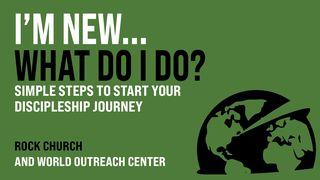Breakthrough Change With Boris JoaquinSample

Breakthroughs or Breakdowns?
Perhaps more than any other phenomenon in our generation, the coronavirus pandemic has proven to be our greatest disruptor, thrusting each of us all over the world to adapt and change on many levels , more than we were ever prepared for.
Noticing the range emotions people have had going through change made me reflect about a little exercise I’ve conducted in my learning sessions and workshops about change to help people surface these feelings and thoughts.
In that exercise, I ask people to pair up, and, with their backs turned against each other, secretly make changes to their appearance and then have their partner see if they can identify all the changes they made. First, I have them make 5 changes. In a second round, I have them make 10 more changes. You should see the looks on people’s faces when they are asked to change 5 things about their appearance―and hear the howling and complaining when they are asked to change 10 more!
People sometimes think this is an observation exercise, but it’s really a change exercise. Witnessing the range of emotions surfaced by this exercise made me reflect on how we can support one another in these times of drastic change.
Ken Blanchard and Phil Hodges, in Lead Like Jesus, discuss 7 dynamics of change.
Understanding them will enable you to strategize better in leading your people through change.
Adapting these 7 dynamics based on the emotional reactions that I observed when we undergo change, I drew up some simple recommendations on the ways we could support one another through change:
Awkward. In the face of change, people will, at the very least, feel awkward, ill at ease, and self-conscious. Change means doing something different and, as such, people will almost always react with some degree of discomfort. In fact, if you don’t feel awkward when you’re trying something new, you’re probably not really doing anything differently. In our current situation, the changes we’ve been going through can be overwhelming, and adjusting to new roles and responsibilities will at the very least feel awkward, or they can make us feel ambivalent, but mostly it will be anxiety-inducing. Be mindful of people’s feelings during this time.
Alone. People will feel alone – especially now that we are in the midst of self-isolating — even if everyone else is going through the same change. It is human nature to have a “Why me?” attitude about change, even if everyone around you faces the same thing. For change to be bearable, it is crucial for people to feel connected and understood. Offer the support people need.
Anxious over what they have to give up. Change often brings with it a personal sense of loss. To move forward, you must deal with this sense of loss. Individuals need to be given a chance to mourn their losses, perhaps just by them taking time to talk with others about how they feel. Give people a chance to process what’s happening.
Anxious over what other changes are coming. Beyond a few changes―or even just one if the change is significant―people can become immobilized and less productive. You know what that’s like, with every new change you confront on a daily basis, and without clear indicators as yet when the disconcerting discomfort will end. The best response: Extend to them your understanding, and when they are ready, have a clear plan and strategy for focusing people’s energy on the few desired behaviors that will produce the greatest results.
Anxious over not having enough resources. Relocating their work from the office to the home will require an assessment of resources available. To remain competitive in today’s markets, however, organizations must find ways to be productive with the fewer or even different resources. Be ready to explain the need for belt-tightening. Be ready to find ways to support your people logistically or to give ideas for resourcefulness.
Anxious about their readiness or capabilities. Although almost everyone will experience some resistance to change, some people will start getting excited about the change, while others will dread and resist doing anything differently for as long as they can. Adopting a digital platform to work and to work together is one such example. Anticipate that not everyone will be on the same timetable.
Ambivalent. The change in our situation will require adjustments in the way we do things. Adjusting to new schedules, new ways of doing things, and new ways of communicating will require a lot of discipline. As we lead our people to adapt, we need to be aware that people tend to revert to their old behavior. Typically, when the focus on a change effort ends, people hope to return to what they were doing before. Though this behavior is natural, managers must counteract it. When we revert to old behaviors, we lose all we have learned. Help people understand that change – even that which none of us expected - keeps everyone forward focused; and that’s a good thing.
Keep these 7 common reactions in mind as you deal with this latest wave of change. By providing the support people need to adapt successfully, your organization can navigate this change.
About this Plan

With a redefined future, it became clear that our lives need a re-vision and a reset. To paraphrase the bumper sticker, “stuff happen”. We cannot avoid the stuff of life, but we can change the way we respond to it. We all need to be visionary leaders who remain on purpose, self-reliant, resourceful. Thriving, not just surviving.
More
We would like to thank Boris Joaquin for providing this plan. For more information, please visit: https://anchor.fm/borisjoaquin
Related Plans

Wake Up Your Faith

2 Samuel 1-11:1: A King After God's Own Heart

I'm New! What Do I Do?

Keeping Godly Relationships

Becoming Love: If We Start at Finish, Where Do We End? (Part 3)

Finding Your Way Back to God

Team C4C Testimonies

Admonishment: Love’s Hard Conversation

Foundation First: Building Habits That Actually Last
